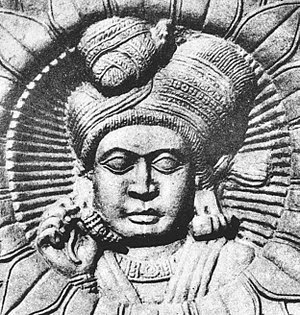ISRO
ISRO
Indian Space
Research Organisation
v
About :
The
Indian Space Research Organization is the national space agency of India,
headquartered in Bangalore. It operates under the Department of Space (DOS),
which is directly under the supervision of the Prime Minister of India, while
the Chairman of ISRO also serves as the executive of DOS. ISRO is India’s
primary agency for carrying out tasks related to the development of space-based
applications, space exploration, and related technologies. It is one of six government space agencies in
the world to have full launch capabilities, deploy cryogenic engines, launch
extraterrestrial missions and operate a large fleet of artificial satellites.
The current chairperson of ISRO is S.Somanath elected as 11th
chairperson of ISRO.
The Indian National Committee for Space Research (INCOSPAR) was
established by Jawaharlal Nehru under the Department of Atomic Energy (DAE) in
1962 at the insistence of scientist Vikram Sarabhai, recognized the need for
space research. INCOSPAR evolved and became ISRO in 1969 within DAE. In 1972,
the Government of India established a Space Commission and DOS, bringing ISRO
under its control. The establishment of ISRO thus institutionalized space
research activities in India. It has since been managed by DOS, which controls
various other institutions in India in the fields of astronomy and space
technology.
v Journey of ISRO:
Eminent scientist Dr. Vikram
Sarabhai had a big role in this development. He understood the need of space
research and was convinced of its role in the development of a nation. INCOSPAR
established the Thumba Equatorial Rocket Launching Station (TERLS) at Thumba
near Thiruvananthapuram on the southern tip of India. TERLS is a spaceport used
to launch rockets.INCOSPAR became ISRO in 1969.
The Department of
Space was created in 1972 and ISRO became a part of it and remains so till
date. The Department of Space reports directly to the Prime Minister of the
country.
During 1975–76, the
Satellite Instructional Television Experiment (SITE) was conducted. It has been
called the ‘world’s greatest sociological experiment’. This was followed by the
‘Kheda Communications Project (KCP)’, which acted as a regional laboratory for
need-based and local-specific program broadcasting in the state of
Gujarat.During this phase, the first Indian spacecraft ‘Aryabhata’ was
developed and was launched using a Soviet launcher.Another major milestone was
the development of the first launch vehicle, SLV3, with a capability to place
40 kg in Low Earth Orbit (LEO), with its first successful flight in 1980.The
80s were the experimental phase, with the Bhaskara-I and II missions being
pioneering steps in the remote sensing field, while the ‘Ariane Passenger
Payload Experiment (APPLE)’ became the precursor to future communication
satellite systems.
Antrix Corporation
Limited (ACL) is a marketing arm of ISRO for the promotion and commercial
exploitation of space products, technical consultancy services, and transfer of
technologies developed by ISRO.
ISRO
built India’s first satellite, Aryabhata, which was launched by the Soviet
Union on 19 April 1975. It was named after the mathematician Aryabhata. In
1980, Rohini became the first satellite to be placed in orbit by an Indian-made
launch vehicle, SLV-3. ISRO subsequently developed two other rockets: the Polar
Satellite Launch Vehicle (PSLV) for launching satellites into polar orbits and
the Geosynchronous Satellite Launch Vehicle (GSLV) for placing satellites into
geostationary orbits.
ISRO
sent a lunar orbiter, Chandrayaan-1, on 22 October 2008 and a Mars orbiter,
Mars Orbiter Mission, on 5 November 2013, which entered Mars orbit on 24
September 2014, making India the first nation to succeed on its first attempt
to Mars, and ISRO the fourth space agency in the world as well as the first
space agency in Asia to reach Mars orbit. On 18 June 2016, ISRO launched twenty
satellites in a single-vehicle, and on 15 February 2017, ISRO launched one
hundred and four satellites in a single rocket (PSLV-C37), a world record.
Beliefs
of ISRO:
‘ISRO’s
designs have always been a matter of talk and are compared to Space X most of
the times. But the thing that makes ISRO different from Space X is being Super
reliable and very much cost-effective.’
ISRO
believes in Brilliant engineering solutions rather than focusing on money and
budget issues.
ISRO’s
Mangalyaan mission was the only successful Mars mission on the first try. For
that, ISRO had to perform 6 orbit raising maneuvers over 3 weeks before heading
to mars because the SLV was not like Falcon to reach directly to Mars.
As
per ISRO’s Director, “ISRO solves problems with engineering solutions.”
ISRO
did not have the fundings that NASA had, it did not have the start-up mind and
institution that Space X had, but none of this stopped ISRO from doing
something extraordinary and the journey continues with the launch of
Chandrayaan II.

Prof Satish Dhawan and the man who heralded a new age of ISRO
and Indian space exploration - APJ Kalam seen in this picture with Indira
Gandhi.
This is
how India's First Rocket was transported in 1963
India's
First Communication Satellite APPLE was launched in 1991, yes it was
transported on a bullock cart.
v ISRO’s Milestones :
- The
first Indian-made sounding rocket was the RH-75 (Rohini-75). It was
launched in 1967 from TERLS. Its weight was only 32 kg. The Rohini series
of sounding rockets were developed by ISRO for atmospheric and
meteorological studies.
- ISRO built its first satellite in 1975 and
named it Aryabhata. It was started by the Soviet Union.
- The first Indian-made launch vehicle was SLV-3
and it was used to launch the Rohini satellite in 1980.
- ISRO launched its first INSAT satellite in
1982. It was a communication satellite. It was named INSAT-1A, which
failed in orbit. The next communication satellite INSAT-1B was launched in
1983.
- Established in 1983 with the commissioning of
INSAT-1B, the Indian National Satellite (INSAT) system is one of the
largest domestic communication satellite systems in the Asia-Pacific
region, with nine operational communication satellites placed in
geostationary orbit. The details regarding INSAT-1B are available on the
linked page. INSAT systems provide services for telecommunications,
television broadcasting, satellite news collection, social applications,
weather forecasting, disaster warning and search and rescue operations.
- ISRO also launched the first IRS (Remote
Sensing Satellite) in 1988.
- ISRO has developed three types of launch
vehicles (or rockets), namely PSLV (Polar Satellite Launch Vehicle), GSLV
(Geosynchronous Satellite Launch Vehicle) and Geosynchronous Satellite
Launch Vehicle Mark III (GSLV
- Mark III or LVM). More details about GSLV Mk
III are available on the link given here.
- ISRO launched its first lunar mission
Chandrayaan I in 2008.
- It also launched the Mars Orbiter Mission
(MOM) or Mangalyaan in 2014. With this, India became the first country to
successfully put a satellite into Mars orbit in its first attempt and
became the fourth space agency and the first Asian space agency. to do
this. Read details about Mangalyaan mission here.
- ISRO has launched several small satellites
mainly for experimental purposes like INS-1C, Aryabhata, Apple.
- Rohini Technology Payload, Youthsat etc. This
experiment includes remote sensing, atmospheric studies, payload
development, orbit control, recovery technology and more.
- Scramjet (Supersonic Combustion Ramjet) Engine
– In August 2016, ISRO successfully test-fired the scramjet (supersonic
combustion ramjet) engine. It uses hydrogen as fuel and oxygen from the
atmospheric air as oxidizer.
- ISRO’s Advanced Technology Vehicle (ATV), an
advanced-sounding rocket, was a solid rocket booster used for testing
scramjet engines in supersonic conditions. The test was the first short
duration experimental test of ISRO’s scramjet engine with a hypersonic
flight at Mach 6. The new propulsion system will complement ISRO’s reusable
launch vehicle with a longer flight life. Read in detail about ISRO’s
Advanced Technology Vehicle on the given link.
- In 2017, ISRO created another world record by
launching 104 satellites in a single rocket. It launched its heaviest
rocket ever, the Geosynchronous Satellite Launch Vehicle-Mark III, and
placed GSAT 19 into orbit.
- India’s manned mission to space, also called
Gaganyaan, is part of the government’s ambition to make India a global
low-cost provider of services in space. The launch vehicle for this
mission will carry heavy payloads into space. GSLV Mk-III with cryogenic
engine is being developed for this purpose. ISRO has already test-fired
GSLV Mk-III with Experimental Crew Module (Re-entry and Recovery
Technology) and Crew Escape System (CES).
v Facilities developed by
ISRO for Space Research :
- Vikram
Sarabhai Space Center (VSSC), Thiruvananthapuram – Space research
activities were initiated in India during the 1960s under Dr. Vikram
Sarabhai, the founder of the Indian space program.
- Liquid Propulsion Systems Center (LPSC),
Thiruvananthapuram
- Satish Dhawan Space Center (SDSC-SHAR),
Sriharikota
- Space Application Center (SAC), Ahmedabad
- National Remote Sensing Center (NRSC),
Hyderabad
India's Mars mission
The
PSLV-37 that carried 104 satellites in orbit.
Goals
and objectives:
Vikram Sarabhai
said in 1969:
There are some who question the relevance of space activities
in a developing nation. To us, there is no ambiguity of purpose. We do not have
the fantasy of competing with the economically advanced nations in the
exploration of the Moon or the planets or manned space-flight. But we are
convinced that if we are to play a meaningful role nationally, and in the
community of nations, we must be second to none in the application of advanced
technologies to the real problems of man and society, which we find in our
country. And we should note that the application of sophisticated technologies
and methods of analysis to our problems is not to be confused with embarking on
grandiose schemes, whose primary impact is for show rather than for progress
measured in hard economic and social terms.
The
former president of India Dr. APJ Abdul Kalam said:
Very many individuals with myopic vision questioned the
relevance of space activities in a newly independent nation which was finding
it difficult to feed its population. But neither Prime Minister Nehru nor Prof.
Sarabhai had any ambiguity of purpose. Their vision was very clear: if Indians
were to play a meaningful role in the community of nations, they must be second
to none in the application of advanced technologies to their real-life
problems. They had no intention of using it merely as a means of displaying our
might.
# India's first satellite - Aryabhata in 1975
Isro has developed so many satellites, communication
satellites for domestic and military purposes also contributed to country’s
development. ISRO has seen dark past, many countries criticised India but India
believed in its scientists and ISRO and it emerged as one of greatest space
agency in world. ISRO achieved many milestones recently like mars mission, 104
satellites in orbit etc. ISRO started from launching rockets from coconut tree
and reached such remarkable heights and success.
References:
https://pdfsource.org/isro-and-its-history/
https://www.indiatimes.com/news/india/15-pictures-that-show-just-why-isro-is-world-s-biggest-underdog-story-271719.html
https://www.aakash.ac.in/blog/isro-the-unstoppable-yaan/
https://en.wikipedia.org/wiki/Indian_Space_Research_Organisation
Blog Credit: Anuj Kanade (Team Historic Wednesday)
NOTE :-
This blog is meant for Educational Purpose only .We do not own any Copyrights related to images and information , all the rights go to their respective owners . The sole purpose of this blog is to educate, inspire, empower and to create awareness in the viewers. The usage is non-commercial (Not For Profit) and we do not make any money from it.
FOLLOW US ON:-
INSTAGRAM :
https://bit.ly/coep_blogs_insta
LINKEDIN:
https://bit.ly/coep_blogs_linkedIn
YOUTUBE:-
https://bit.ly/Coep_blogs_YouTube













Comments
Post a Comment